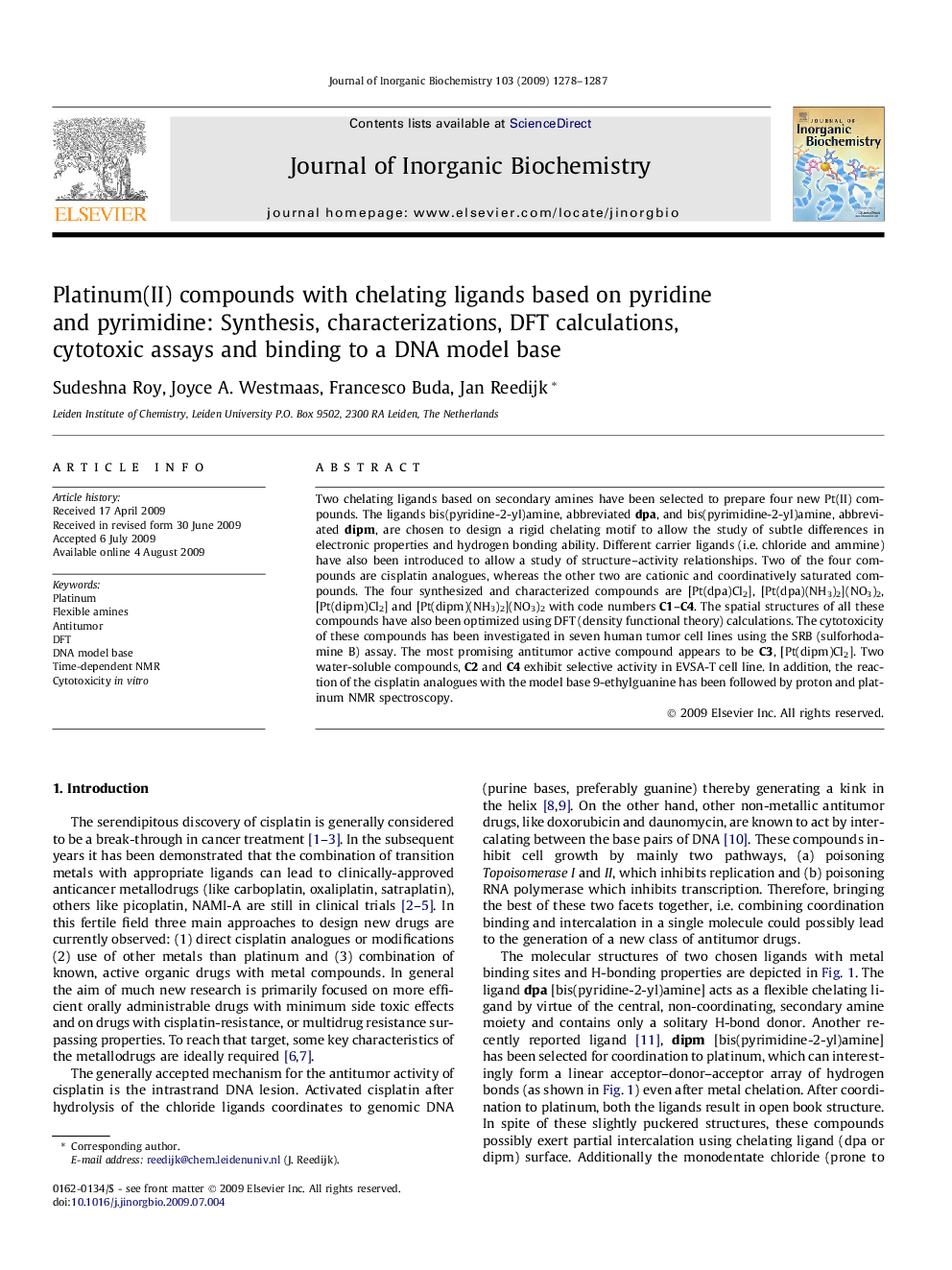| Article ID | Journal | Published Year | Pages | File Type |
|---|---|---|---|---|
| 1317246 | Journal of Inorganic Biochemistry | 2009 | 10 Pages |
Two chelating ligands based on secondary amines have been selected to prepare four new Pt(II) compounds. The ligands bis(pyridine-2-yl)amine, abbreviated dpa, and bis(pyrimidine-2-yl)amine, abbreviated dipm, are chosen to design a rigid chelating motif to allow the study of subtle differences in electronic properties and hydrogen bonding ability. Different carrier ligands (i.e. chloride and ammine) have also been introduced to allow a study of structure–activity relationships. Two of the four compounds are cisplatin analogues, whereas the other two are cationic and coordinatively saturated compounds. The four synthesized and characterized compounds are [Pt(dpa)Cl2], [Pt(dpa)(NH3)2](NO3)2, [Pt(dipm)Cl2] and [Pt(dipm)(NH3)2](NO3)2 with code numbers C1–C4. The spatial structures of all these compounds have also been optimized using DFT (density functional theory) calculations. The cytotoxicity of these compounds has been investigated in seven human tumor cell lines using the SRB (sulforhodamine B) assay. The most promising antitumor active compound appears to be C3, [Pt(dipm)Cl2]. Two water-soluble compounds, C2 and C4 exhibit selective activity in EVSA-T cell line. In addition, the reaction of the cisplatin analogues with the model base 9-ethylguanine has been followed by proton and platinum NMR spectroscopy.
